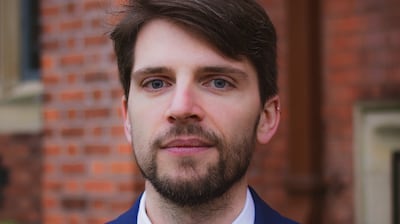Trinity College Dublin has elected Linda Doyle as its new provost; after almost 430 years, Ireland's oldest educational establishment will have its first female chief executive. Following her appointment, Doyle posed for a photograph with a statue of George Salmon, provost of Trinity 1888 to 1904, who reputedly said that "over my dead body will women enter this college". Ironically, the day that Salmon died, January 22nd, 1904, was the day that Isabel Marion Weir arrived in Dublin to enrol as the university's first female student.
That Doyle's election is such a landmark reminds us of the many obstacles Irish women have had to overcome to be accepted by educational and scientific establishments. The astronomer Annie Maunder (1868-1947) is a particularly good example. Maunder, born as Annie Scott Dill Russell in Strabane, excelled at school and won a prize in the 1886 Irish Intermediate examinations.
Although Trinity only admitted men, the Royal University of Ireland did allow women to sit its examinations. Russell might have been expected to take a degree there, but was dissuaded by the experience of Alice Everett, who had earned top marks in its first-year science examination in 1884.
Russell threw herself into her work, qualifying to use observing telescopes and noting the changing size and position of sunspots
High-scoring students would usually be offered a scholarship, but the university's administration decided that women were not eligible for awards, and Everett decided to continue her studies at Girton College, Cambridge. Russell won a scholarship to Girton, where she studied for the Mathematical Tripos, the world's most competitive mathematical course.
Russell passed the Tripos (women were not awarded degrees at Cambridge until 1921) and moved to Jersey, where she taught high school mathematics. Everett, meanwhile, had taken a job at the Royal Observatory at Greenwich. The Astronomer Royal, William Christie, had overseen an expansion in the observatory's facilities, but had struggled to persuade the government to hire more assistants.
Instead, he was given funding for additional “computers”, an entry-level position. Christie made this money stretch further by creating a new role of “lady computer”. This allowed him to circumvent civil service regulations making it difficult to hire women, and to employ overqualified female candidates on wages normally offered to schoolboys.
Although the salary (£4 per month, roughly €600 today), was only half what she earned teaching, Russell was immediately interested in the job. She persuaded Robert Stawell Ball, the Royal Astronomer of Ireland, to write a letter supporting her application.
While this was successful, Russell’s attempt to renegotiate her salary, less than a quarter of the equivalent male wage, was not. Yet the lure of putting her mathematical training to practical scientific purposes was too strong, and Russell threw herself into her work, qualifying to use observing telescopes and noting the changing size and position of sunspots.
When Annie married Walter Maunder in 1895, she was obliged to resign from Greenwich
Through work and shared religious commitment, Russell bonded with Edward Walter Maunder, head of photography at Greenwich. Maunder was an enthusiastic supporter of female astronomers. In 1886, Elizabeth Isis Pogson had been nominated as a fellow of the Royal Astronomical Society (RAS), but withdrew when a barrister advised that the use of "he" and "him" in the society's constitution was intended to exclude women.
Maunder, a council member, decided in 1890 to establish the British Astronomical Association (BAA), a more egalitarian body that admitted women. In 1892, he nominated Russell and Everett as fellows of the RAS, with the "him" on their application forms crossed out and replaced with "her". One member quipped that the nominations would make RAS meetings more social, "and all we shall require is a piano and a fiddle", while another challenged the legality of any election; ultimately neither were elected.

When Annie married Walter Maunder in 1895, she was obliged to resign from Greenwich. She turned her efforts to the BAA, editing its journal and taking part in several eclipse observations. She also continued working closely with Walter, authoring several papers on sunspots. In 1908, they published an astronomy book aimed at a popular audience, The Heavens and their Story. In the introduction, Walter explained that, despite being co-authored, it was “almost wholly the work of my wife”. Finally, in 1916 the RAS ended its ban and Walter successfully nominated his wife as its first female fellow.
At every stage of her career, Maunder faced barriers because of her gender. That she overcame so many of them was down to her exceptional ability, support, and some good luck. Hopefully, the present generation of Irish scientists will need only the former.
Stuart Mathieson is a postdoctoral fellow working in Dublin City University School of History and Geography










